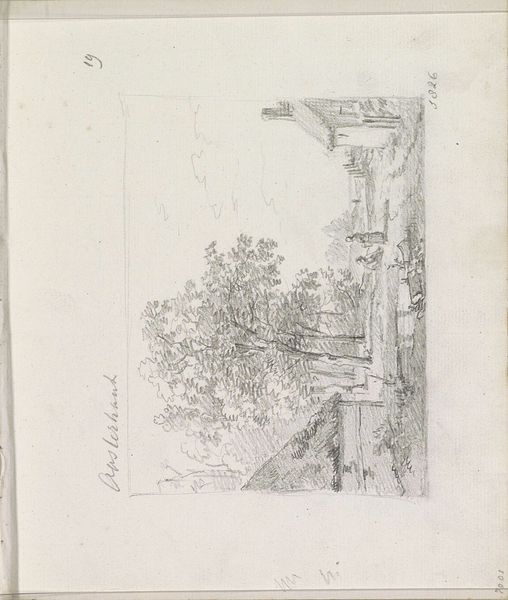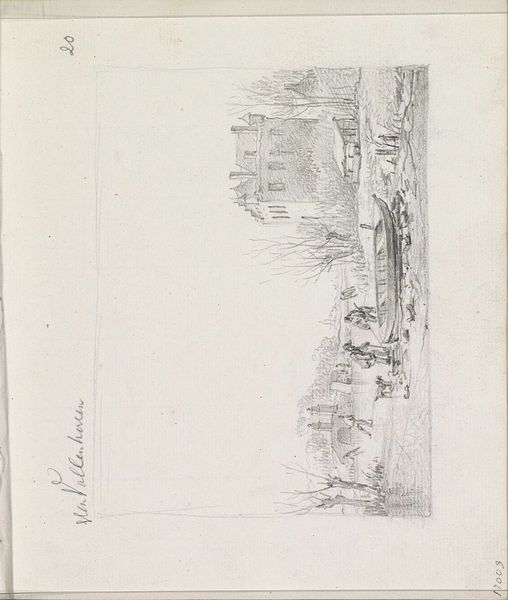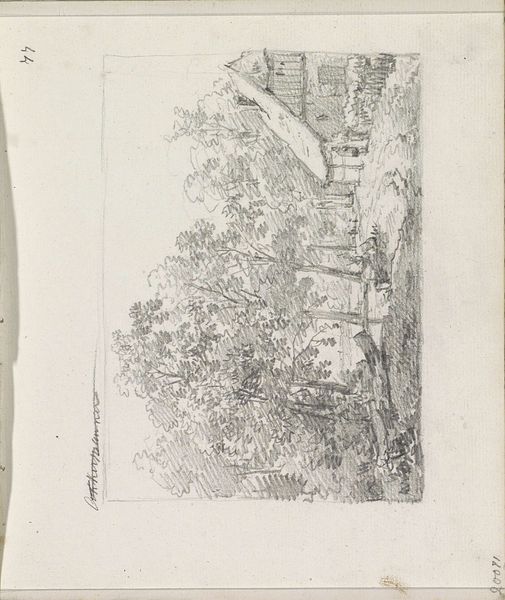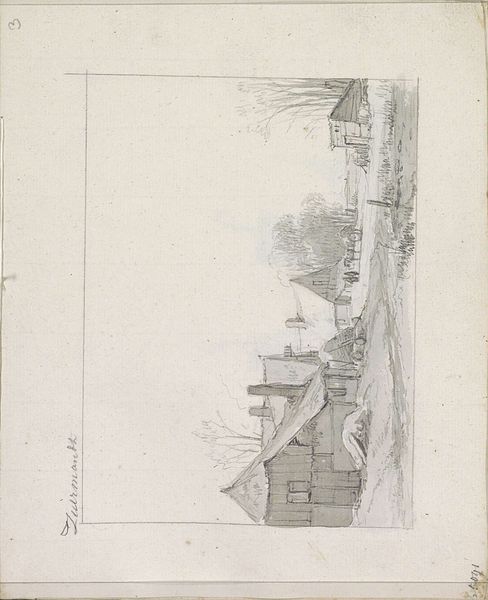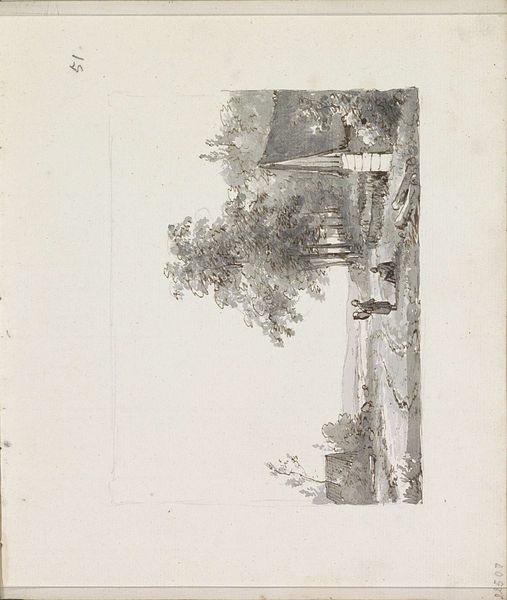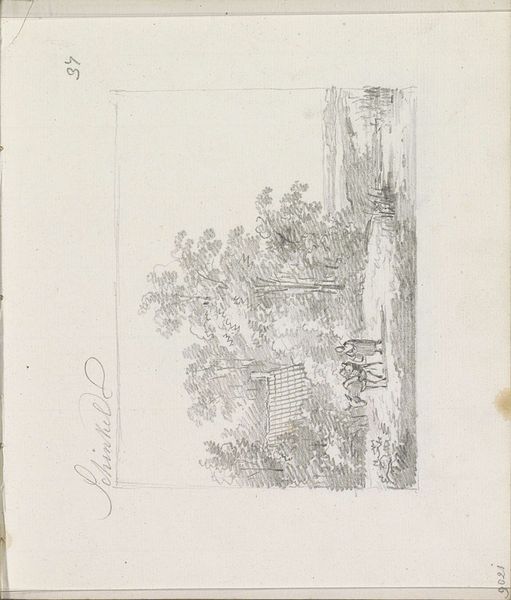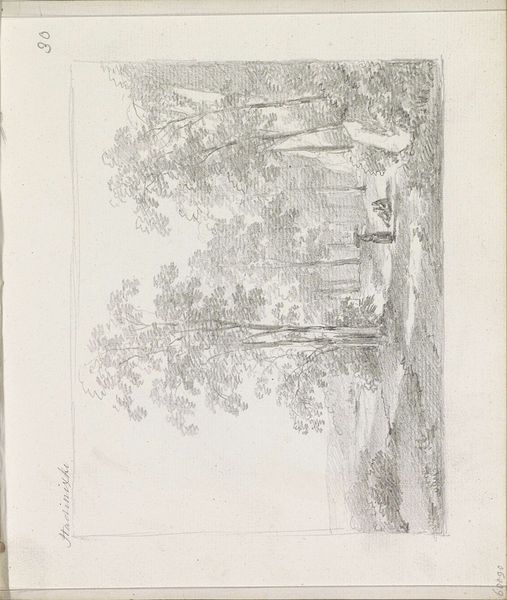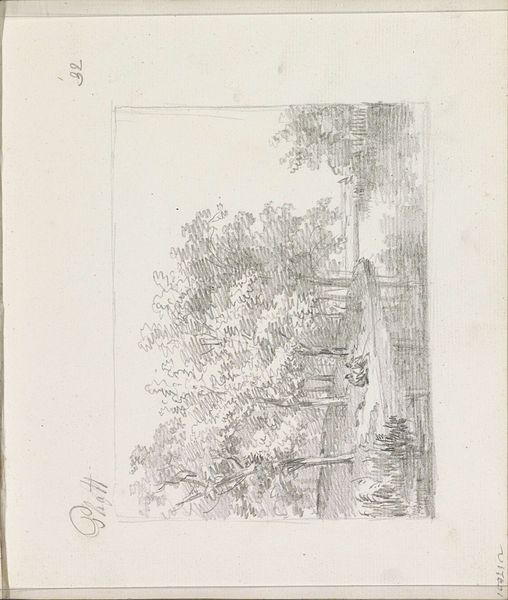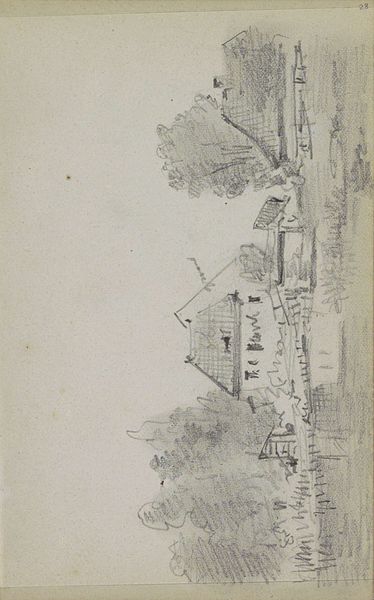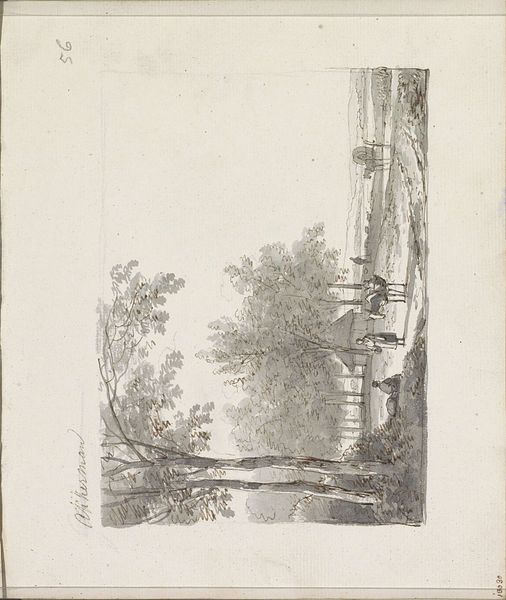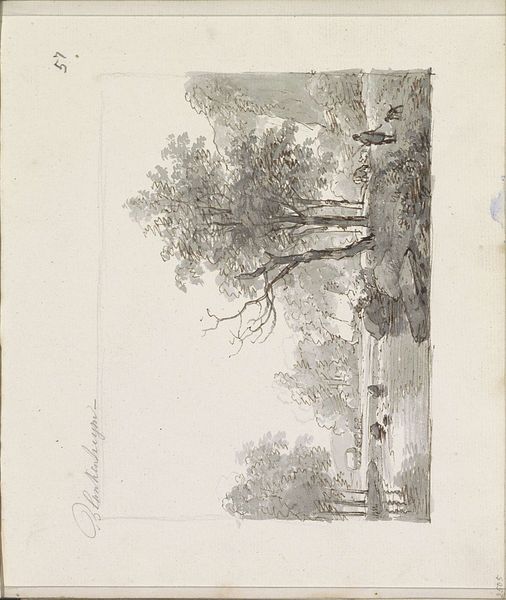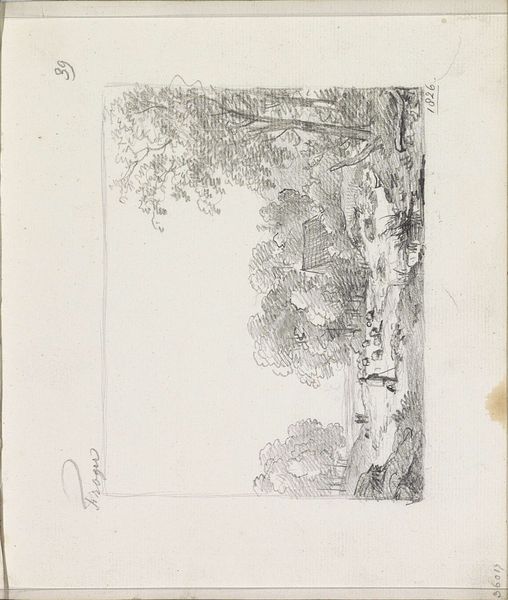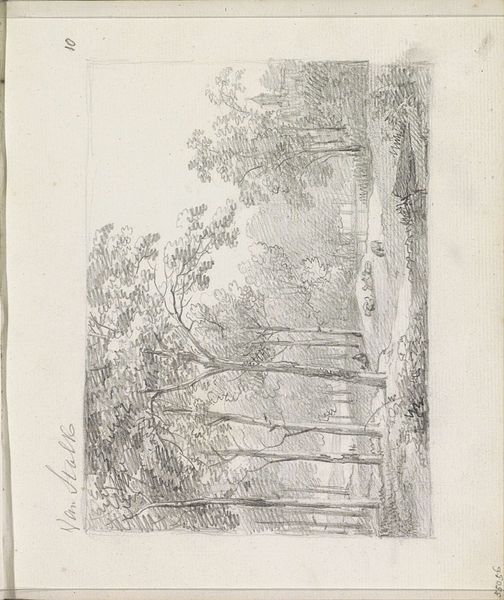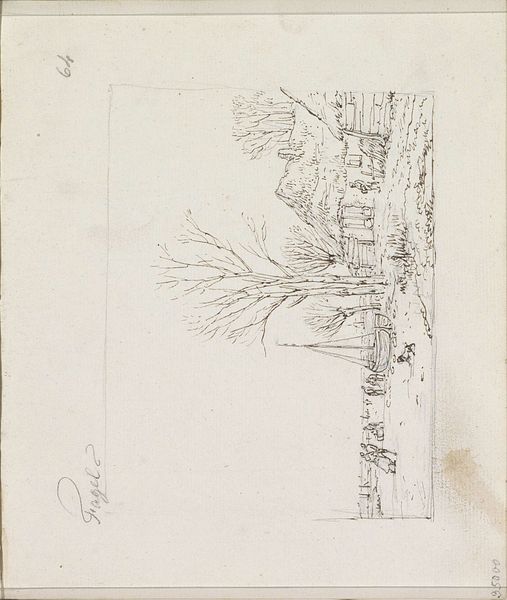
Landschap met figuren in een roeiboot bij een brug c. 1825 - 1829
0:00
0:00
drawing, pencil
#
drawing
#
amateur sketch
#
pen sketch
#
pencil sketch
#
incomplete sketchy
#
landscape
#
sketchwork
#
ink drawing experimentation
#
detailed observational sketch
#
pen-ink sketch
#
pencil
#
pen work
#
realism
#
initial sketch
Copyright: Rijks Museum: Open Domain
Curator: Welcome. We're looking at a drawing by Andreas Schelfhout, dating from about 1825 to 1829. It's titled "Landscape with Figures in a Rowing Boat near a Bridge." Editor: It's lovely, this soft, graphite-y quality. Almost dreamlike, like a memory fading at the edges. Gives the whole scene a sort of hazy nostalgia. Curator: That's interesting. The drawing, rendered in pencil, pen, and ink, captures a quintessential Dutch scene. Notice the meticulous details—the delicate rendering of the trees, the reflections in the water. Schelfhout really evokes the calm of the landscape. But also a very particular atmosphere, this damp almost marine climate with strong traditions for navigation and crossing the landscapes with water. Editor: Absolutely. I find my eye keeps going back to the bridge. It's not just a bridge; it’s like a little stage connecting two worlds, doesn’t it? The figures in the boat become part of this bigger, narrative, hinting at journeys and connections. And of course all travel can be seen as some form of ritual journey of the self. Curator: Bridges are potent symbols, representing transitions, connections, and overcoming obstacles. Water too in itself can have great emotional resonance. Rowing in particular embodies human connection, an invitation to travel across waters, literally navigating emotional waters of some kind! Editor: Mmm, it’s funny, the bridge looks quite… rudimentary! But that only emphasizes its symbolism, doesn’t it? This simple construction linking people is almost more potent than if it were grander. A bridge only need be functional to mean much. Curator: Precisely. Schelfhout often explored themes of everyday life. We can infer in this image also, themes of labor, leisure, travel... In those days, life on and around water would have a central presence in all the social aspects of that culture. Editor: True. And now that I think of it...the sky seems so big. All the visual weight rests there...It nearly makes me wonder if the figures and even the bridge aren't really secondary? Is it more a landscape ABOUT a sky? It feels so hopeful and optimistic. Curator: I would never have considered it quite that way, but I am very happy you brought that element forward. And that in a nutshell, to me, captures what makes experiencing art with others so invigorating. We're still discovering fresh perspectives even two centuries later. Editor: Art’s like a living language, right? It shapeshifts with the viewer, reveals new textures and meanings all the time! What an exciting experience for all of us indeed!
Comments
No comments
Be the first to comment and join the conversation on the ultimate creative platform.
